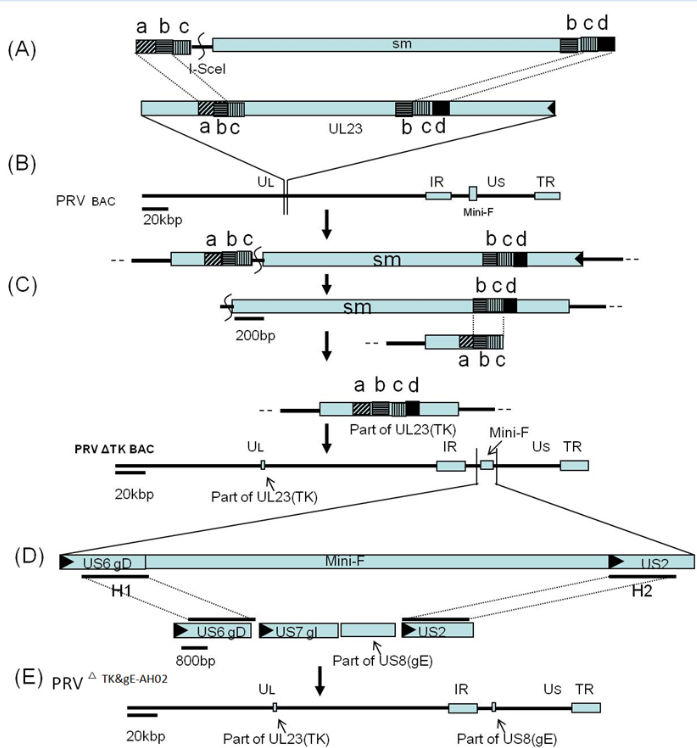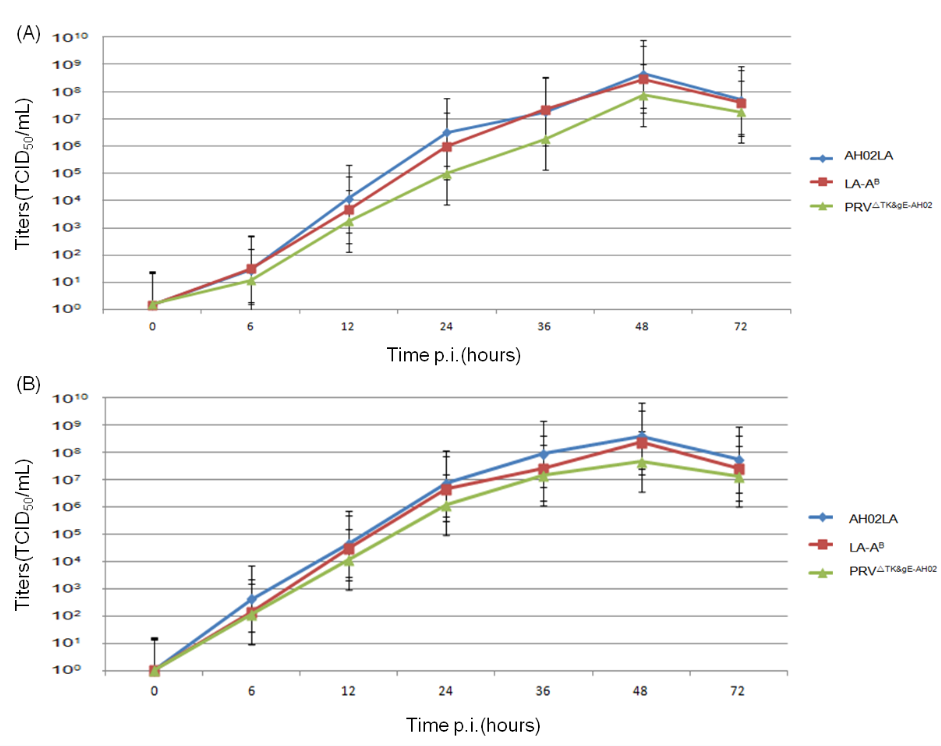Background:
Since the outbreak of a new emerging virulent pseudorabies virus mutant in Chinese pig herds, intensive research is focusing on construction of novel gene deletion vaccine based on the variant virulent viruses. An ideal vaccine candidate is expected to have a balanced safety and immunogenicity.
Results:
From the infectious clone of PRV AH02LA strain, a TK deletion mutant was generated through two-step Red mutagenesis. After homologous recombination with a transfer vector, a TK&gE dual deficient mutant PRV (PRVΔTK&gE-AH02 ) was generated, followed by confirmation via PCR, RFLP and sequencing. Growth kinetics test showed that PRVΔTK&gE-AH02 reached a titer of 107.5 TCID50 /mL on ST cells.
The PRVΔTK&gE-AH02 at a dose of 106.0 TCID50 /animal was not virulent in mice or 1-day-old piglets with PRV antibody. No clinical signs or virus shedding were detected in 28~35-day-old piglets without PRV antibody after nasally or intramuscularly administrated with a dose of 106.0 TCID50, although it caused one death of four 1-day-old piglets without PRV antibody. In the efficiency test of PRVΔTK&gE-AH02, All four piglets 28~35-day-old piglets without PRV antibody in the challenge control showed typical clinical symptoms and virus shedding, and two died at 4~5 days post challenge. All piglets in 105.0, 104.0 and 103.0 TCID50/dose PRVΔTK&gE-AH02 groups provided complete protection against challenge at only seven days post intramuscular vaccination. More importantly, PRVΔTK&gE-AH02 stopped virus shedding in the piglets. In contrast, all four piglets in PRV Bartha K61 vaccine group developed high body temperature (≥40.5℃) and viral shedding, although they had mild or even no clinical symptoms.
Conclusions:
The constructed TK&gE dual deletion mutant PRVΔTK&gE-AH02 can reach a high titer on ST cells. The live vaccine of PRVΔTK&gE-AH02 is highly safe, and can not only provides clinical protection but also stops virus shedding. This study suggests that PRVΔTK&gE-AH02 might work as a promising vaccine candidates to combat PRV variant emerging in Chinese herds since 2011.




